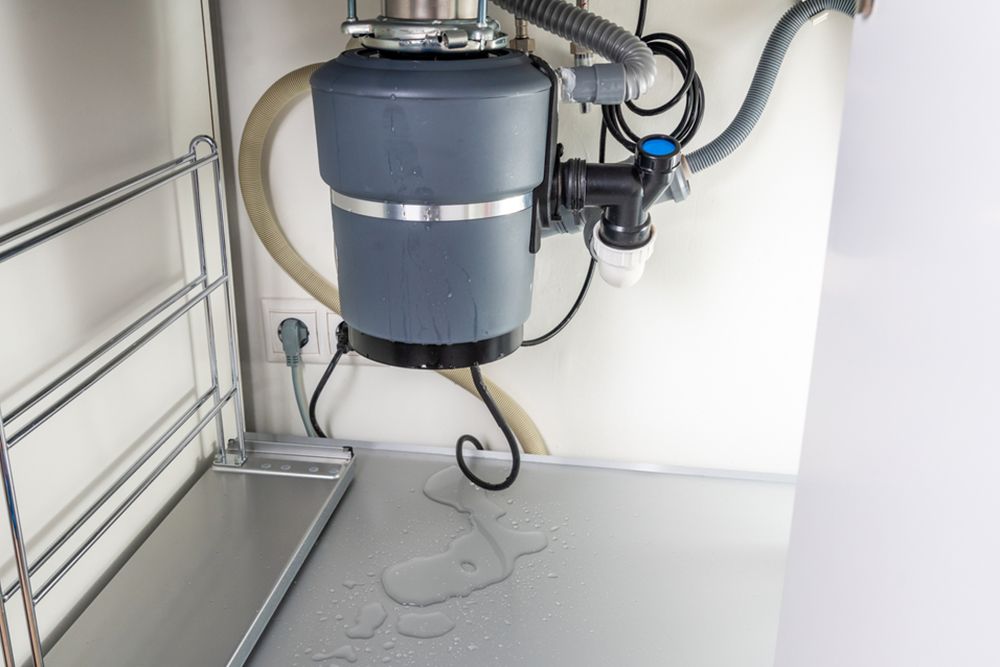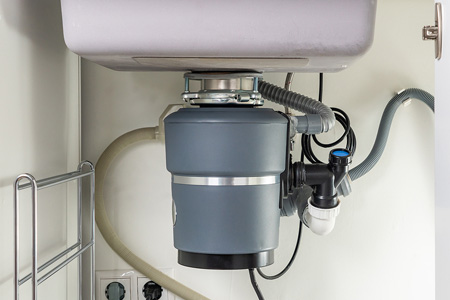Clear Techniques for Repairing a Leaky Garbage Disposal
Clear Techniques for Repairing a Leaky Garbage Disposal
Blog Article
Right here in the next paragraph you will find a lot of worthwhile advice relating to Why Is My Garbage Disposal Leaking From the Bottom?.

Garbage disposals are essential kitchen devices that aid in taking care of food waste efficiently. Nonetheless, a leaking waste disposal unit can be a frustrating and unpleasant issue to take care of. Thankfully, numerous leaks can be fixed quickly with a couple of simple actions. In this article, we will certainly go over how to take care of a leaking waste disposal unit efficiently.
Intro
Garbage disposals are set up under cooking area sinks and are designed to shred food waste into smaller sized items, allowing it to go through the plumbing system conveniently. While these devices are typically dependable, leaks can happen with time due to wear and tear, loose links, or damages to the device.
Step-by-Step Overview to Fixing a Leaking Garbage Disposal
Switch off the Power
Before attempting any repair services, ensure that the power to the garbage disposal device is switched off to avoid the threat of electric shock.
Situate the Leakage
Determine the specific place of the leak and determine the cause
Tighten Connections
Utilize a wrench to tighten any type of loose connections between the disposal system and the pipes system.
Replace Seals or Gaskets
If the leak is due to worn seals or gaskets, get rid of the old parts and replace them with new ones.
Patching Cracks or Holes
For splits or openings in the disposal device, usage epoxy or a suitable patching material to seal the damaged area.
Identifying the Source of the Leak
Before attempting to fix a leaking garbage disposal, it is necessary to identify the source of the leakage. This can typically be done via aesthetic evaluation or by performing easy examinations.
Visual Assessment
Examine the waste disposal unit unit very carefully for any type of signs of water leak. Pay attention to locations around seals, gaskets, and connection points.
Testing for Leakages
One method to examine for leaks is by running water through the disposal unit and checking for any kind of visible indications of leak.
Typical Root Causes Of Leaks in Trash Disposals
Worn Seals and Gaskets
Seals and gaskets play a vital role in preventing water from leaking out of the waste disposal unit. In time, these components can degrade, resulting in leakages around the disposal unit.
Loose Connections
The links in between the waste disposal unit and the plumbing system can become loosened over time, triggering water to leak out throughout procedure.
Splits or Holes in the Disposal Unit
Physical damage to the garbage disposal, such as splits or openings in the housing, can additionally lead to leakages.
Tools and Products Needed for Taking Care Of a Leaking Waste Disposal Unit
Before starting the repair work process, collect the essential devices and materials, consisting of a screwdriver, adjustable wrench, plumbing technician's putty, substitute seals or gaskets, and epoxy or patching material for repairing cracks or openings.
Evaluating the Waste Disposal Unit After Repair Work
Once the fixing is complete, examine the garbage disposal by running water via it to make sure that the leak has actually been solved.
Preventive Upkeep Tips to Avoid Future Leakages
To prevent future leaks, it is essential to execute routine upkeep on your garbage disposal. This includes keeping it clean, preventing putting non-food items or hard things down the disposal, and periodically looking for leakages or other issues.
Conclusion
Finally, dealing with a leaking waste disposal unit is a fairly straightforward procedure that can be completed with standard devices and materials. By adhering to the actions described in this write-up and practicing precautionary upkeep, you can maintain your garbage disposal in good working condition and prevent pricey repair work in the future.
HERE’S HOW TO FIX YOUR GARBAGE DISPOSAL
WHAT TO DO IF SOMETHING IS STUCK IN YOUR GARBAGE DISPOSAL
If the impeller won’t turn, there’s probably something stuck in the disposal. It could be a steak bone or peach pit, although plumbers report pulling all sorts of inappropriate objects out of disposals, such as bottle caps or aluminum foil. Make sure power to the disposal is off, and look inside to see if you can see the source of the jam.
Never stick your fingers in a disposal. Pull out anything you see with tongs or pliers.
If the disposal still won’t work, it may be time to call a plumber or consider buying a new disposal. GEM Plumbing & Heating is here for all of your garbage disposal needs.
WHAT TO DO IF YOUR GARBAGE DISPOSAL DRAIN IS CLOGGED
Take everything out from underneath your sink and put a bucket or other container under your disposal to catch any water that drains out. Disconnect your disposal from the power supply. If it’s plugged into a wall outlet, unplug it. If it’s hardwired into an electrical box, go to the electrical panel and turn off the breaker for the disposal. Pour ¼ cup of baking soda into the drain, followed by ½ cup of white vinegar. Give the solution a few minutes to fizz and do its work. Look into the disposal with a flashlight to see if you can see an object that might be causing the clog. If you see it, remove it using tongs or pliers. MORE TIPS ON DEALING WITH A CLOGGED GARBAGE DISPOSAL
Never use drain cleaner in a garbage disposal. It can damage the plastic parts inside the disposal. You can also be splashed with the caustic liquid while working to clear the clog. Beware! Never stick your fingers into a garbage disposal. Trust us — not a good idea. In many instances, your dishwasher drains through your garbage disposal. This allows the disposal to grind any large food particles that may be drained out of your dishwasher. There are some jurisdictions, however, where the plumbing code prohibits such a connection. WHAT TO DO WHEN YOUR DISHWASHER DRAINS THROUGH THE DISPOSAL
Run some water in the sink so your plunger has at least a ½-inch of water to create a seal and plunge vigorously up and down several times. You may need to repeat this several times. Run hot water down the drain to clear any residue that remains.

Do you really like more info about Why Is ? Give a review directly below. We would be delighted to listen to your reactions about this article. In hopes that you come back again soon. Do you know another person who is sincerely interested in the subject? Take a moment to promote it. Thanks a bunch for your time. Kindly check our website back soon.
Book-Now Report this page